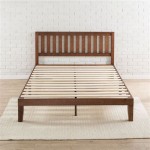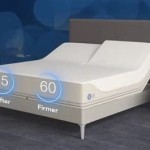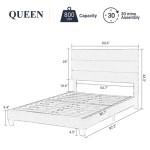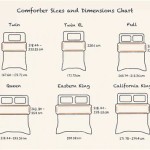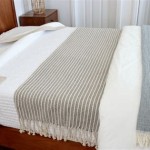How to Stop a Bed Frame From Squeaking
A squeaky bed frame can disrupt sleep and become a persistent annoyance. Fortunately, several methods exist to locate and silence these unwanted noises. This article outlines various techniques to address the issue, from simple fixes to more involved solutions.
Identifying the Source of the Squeak
Before attempting any repairs, pinpointing the squeak's origin is crucial. This involves systematic checking of different areas of the bed frame.
- Methodical Testing: Sit or lie on different sections of the bed, applying pressure to isolate the squeaky area. Have someone else listen while you move around to help pinpoint the noise.
- Checking the Mattress: Sometimes, the mattress itself, especially if old or worn, can be the source of the noise. Test the mattress separately from the frame to rule out this possibility.
- Focusing on the Frame: Once the mattress is eliminated, focus on the frame's joints, slats, and connections. Gently apply pressure to each component to identify the specific squeak source.
Tightening Loose Connections
Loose bolts and screws are often the primary culprits of squeaking bed frames. Tightening these connections can often resolve the issue quickly.
- Using the Right Tools: Employ the appropriate screwdriver or wrench for each fastener. Avoid over-tightening, as this can strip the screw or damage the frame material.
- Systematic Approach: Start with the headboard and footboard connections, then move to the side rails and any supporting beams or legs. Systematically check and tighten every visible bolt and screw.
- Adding Washers: If bolts continue to loosen, adding washers can create a more secure and stable connection, preventing further squeaking.
Lubricating Moving Parts
Friction between metal components can create squeaking. Lubricating these areas can significantly reduce or eliminate the noise.
- Suitable Lubricants: Use lubricants specifically designed for metal-on-metal contact, such as WD-40, silicone-based sprays, or even paraffin wax. Avoid using oil-based lubricants, as they can attract dust and dirt, potentially exacerbating the problem over time.
- Targeted Application: Apply the lubricant directly to the areas where metal parts rub together, such as joints, hooks, and slots. A small amount usually suffices.
- Testing After Application: After applying the lubricant, test the bed frame by moving around on it to ensure the squeak is gone. Reapply if necessary.
Addressing Slat Issues
Wooden slats that support the mattress can become loose or rub against the frame, leading to squeaking.
- Securing Loose Slats: Check that each slat is securely positioned within its supports. If any are loose, reposition them or use padding or tape to create a snug fit.
- Padding Contact Points: Place felt pads, rubber bumpers, or pieces of cloth between the slats and the frame where they make contact. This cushioning can absorb vibrations and prevent squeaking.
- Replacing Worn Slats: If slats are cracked or significantly worn, consider replacing them entirely. This ensures adequate support for the mattress and prevents further noise issues.
Reinforcing Weak Joints
Over time, bed frame joints can weaken, contributing to instability and squeaking. Reinforcing these joints can provide a more permanent solution.
- Using Wood Glue: Wood glue can be applied to loose or weakened joints to create a stronger bond. Clamp the joint tightly while the glue dries for optimal results.
- Metal Braces or Corner Brackets: Metal braces or corner brackets can be added to the inside corners of the frame for extra support. These are particularly useful for frames made of softer wood.
- Adding Support Legs: For larger beds or frames with central support beams, adding extra legs can distribute the weight more evenly and reduce stress on the joints.
Padding and Cushioning
Strategic placement of padding can dampen vibrations and reduce friction between different components of the bed frame.
- Padding the Headboard and Footboard: If the headboard or footboard rubs against the wall, place felt pads or rubber bumpers on the contact points to prevent squeaking.
- Cushioning Metal Frames: For metal frames, wrapping sections with foam pipe insulation or adhesive-backed felt can reduce noise caused by metal-on-metal contact.
- Checking the Box Spring: If a box spring is used, ensure it fits snugly within the frame and isn't contributing to the noise. Adding padding between the box spring and frame can help.
Professional Repair or Replacement
If the squeaking persists despite these efforts, professional help may be necessary.
- Consulting Furniture Repair Specialists: Furniture repair specialists can assess the frame and identify complex structural issues that might be causing the squeaking.
- Considering Frame Replacement: In some cases, especially with older or significantly damaged frames, replacement may be the most practical solution.

How To Stop A Bed From Squeaking Tips Eliminate The Noise

How To Stop A Bed From Squeaking Tips Eliminate The Noise

How To Fix A Squeaky Bed 8 Tips Sleepopolis 2024

How To Silence Your Obnoxiously Squeaky Bed With 4 Easy Macgyver Style Fixes Macgyverisms Wonderhowto

How To Stop A Bed From Squeaking Tips Eliminate The Noise

What S That Noise Dealing With A Creaky Wooden Bed

How To Fix A Squeaking Bed Frame With Pictures Wikihow Simple Diy

How To Fix A Squeaky Bed In 5 Steps Amerisleep

How To Fix A Squeaking Bed Frame With Pictures Wikihow

12 Easy Fixes For A Squeaky Metal Bed Frame Worst Room
Related Posts

